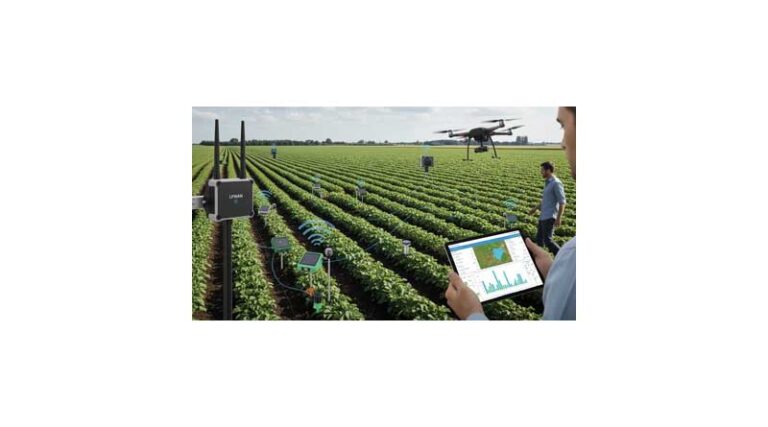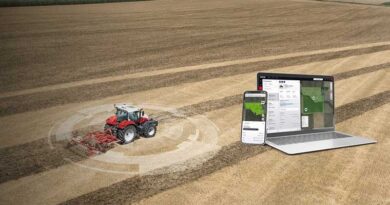
LPWAN for Agriculture Market to Hit $6.8 billion by 2033
18 August 2025, New Delhi: According to Research intelo, the Global Low Power Wide Area Network (LPWAN) for Agriculture market size was valued at $1.2 billion in 2024 and is projected to reach $6.8 billion by 2033, expanding at a robust CAGR of 21.7% during the forecast period of 2024–2033. The primary driver fueling this impressive growth is the increasing adoption of smart agricultural practices, which demand robust, cost-effective, and energy-efficient connectivity solutions for monitoring and automation across vast rural landscapes. The deployment of Low Power Wide Area Network (LPWAN) technologies has become instrumental in enabling real-time data collection, analysis, and remote management of agricultural operations, thereby optimizing yields and resource utilization while reducing operational costs for farmers worldwide.
Agriculture has always been the backbone of human civilization, but in recent years, the sector has undergone a digital transformation. One of the most impactful technologies fueling this change is LowPower Wide Area Network (LPWAN). By enabling seamless, long-range, low-energy communication between devices, LPWAN is redefining how farms operate, allowing farmers to leverage data-driven insights, optimize resources, and improve productivity. The LPWAN for agriculture market is experiencing rapid growth as governments, technology providers, and agricultural enterprises increasingly invest in smart farming solutions.
Market Growth Drivers
Several factors are accelerating the adoption of LPWAN in agriculture. First, the rising global demand for food has put pressure on farmers to increase yield while reducing costs and environmental impact. Precision agriculture, powered by LPWAN, offers solutions to achieve this balance.
Second, advancements in Internet of Things (IoT) integration have created opportunities for connected devices in farming. LPWAN provides the backbone for these IoT networks, offering scalability and cost-efficiency. Additionally, government initiatives promoting smart farming and rural digitization are further supporting the growth of the market.
The affordability of LPWAN infrastructure compared to traditional connectivity solutions is also a significant growth enabler. Farmers, particularly in developing regions, are increasingly adopting LPWAN systems due to their low deployment and maintenance costs.
Challenges in Adoption
Despite its potential, the adoption of LPWAN in agriculture is not without challenges. Connectivity quality can vary depending on terrain and climatic conditions, which may limit network performance. Security and data privacy concerns also persist, as large-scale deployment of connected devices exposes farms to cyber risks.
Moreover, farmers in remote or underdeveloped regions may face financial and technical barriers when adopting LPWAN solutions. Lack of awareness and insufficient training further hinder widespread usage. Addressing these challenges requires coordinated efforts from technology providers, governments, and agricultural organizations.
Emerging Trends
The LPWAN for agriculture market is evolving rapidly with innovations that promise to expand its reach. Hybrid solutions combining LPWAN with satellite and cellular networks are gaining traction, enabling connectivity even in the most remote areas. Additionally, AI and data analytics are being integrated into LPWAN systems, allowing farmers to predict crop diseases, optimize fertilizer usage, and improve long-term planning.
Another key trend is the rise of public-private collaborations. Governments and private technology companies are partnering to build large-scale agricultural IoT ecosystems powered by LPWAN. These collaborations are expected to accelerate smart farming adoption and strengthen food security initiatives globally.
Technological Advancements
The LPWAN for agriculture market is witnessing continuous technological progress that is expanding the scope of its applications. Innovations in LoRaWAN and NB-IoT standards are enhancing network capacity, reliability, and energy efficiency, allowing devices to transmit data for years on a single battery. This is particularly valuable for remote farms where frequent maintenance is challenging.
Another significant advancement lies in the integration of edge computing with LPWAN networks. By processing data closer to the source, edge-enabled LPWAN devices reduce latency and enable faster decision-making in critical scenarios, such as adjusting irrigation during unexpected weather changes.
Artificial Intelligence (AI) and Machine Learning (ML) are also being embedded into LPWAN-driven IoT systems. These technologies allow predictive analytics for crop yields, pest infestations, and soil health, helping farmers act proactively rather than reactively. Additionally, the development of multi-technology hybrid networks combining LPWAN with satellite, Wi-Fi, and cellular systems is addressing coverage limitations in remote agricultural zones.
Future Outlook
The future of the LPWAN for agriculture market looks promising, with analysts predicting significant growth in the coming years. As climate change continues to challenge traditional farming practices, data-driven agriculture supported by LPWAN will play a crucial role in ensuring sustainable food production.
With the expansion of 5G and advanced IoT infrastructure, LPWAN is likely to complement next-generation connectivity solutions rather than compete with them. Together, these technologies will create a robust ecosystem where farmers can manage resources more efficiently, increase productivity, and reduce environmental impact.
Competitive Landscape
The LPWAN for agriculture market is becoming increasingly competitive as both established technology providers and emerging startups strive to capture market share. Major players in the LPWAN ecosystem, including Semtech Corporation, Kerlink, Libelium, Cisco Systems, Huawei Technologies, Actility, Senet, Laird Connectivity, MultiTech Systems, Nwave Technologies, Sigfox, Link Labs, are actively collaborating with agricultural solution providers to expand their reach into farming communities. Network operators are also investing in LPWAN infrastructure, particularly in rural areas, to support agricultural IoT applications.
Also Read: Digital Wave Redefines Madhya Pradesh’s Agricultural Markets
📢 If You’re in Agriculture, Make Sure the Right People Hear Your Story.
From product launches to strategic announcements, Global Agriculture offers unmatched visibility across international agri-business markets. Connect with us at pr@global-agriculture.com to explore editorial and advertising opportunities that reach the right audience, worldwide.






